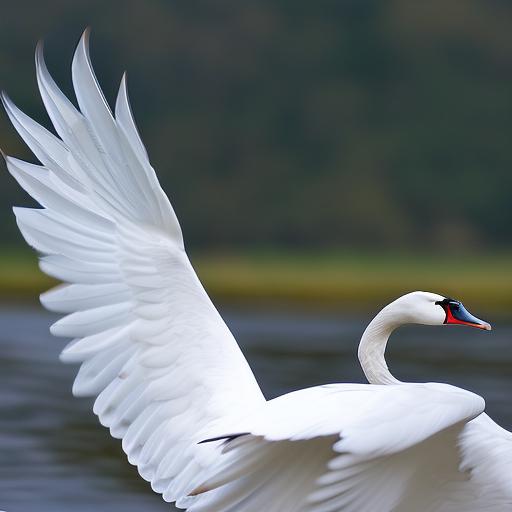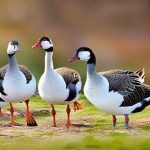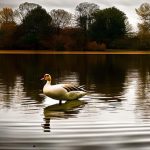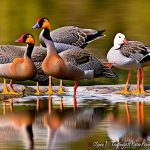White swans and geese are two common bird species that are often seen in urban areas. These birds are known for their graceful appearance and can often be found in parks, lakes, and other bodies of water. While they may seem similar, there are distinct differences in their behavior and interactions with each other. In this article, we will explore the behavior of white swans and geese towards each other, the impact of white swans on geese populations in urban areas, the role of white swans in maintaining ecological balance in wetlands, the possibility of training white swans to keep geese away from certain areas, and other methods for managing geese populations in urban areas.
Key Takeaways
- White swans and geese are common waterfowl found in urban areas.
- White swans and geese have different behaviors towards each other, with swans often being aggressive towards geese.
- While white swans may have a natural ability to keep geese away, it is not a foolproof method of goose control.
- White swans can play a role in maintaining ecological balance in wetlands by controlling the population of geese.
- While white swans can be trained to keep geese away from certain areas, relying solely on them for goose control may have potential drawbacks.
The behavior of white swans and geese towards each other
When white swans and geese encounter each other, their behavior can vary. In general, white swans are territorial birds and may display aggressive behavior towards geese. They may chase and peck at the geese to establish dominance and protect their territory. Geese, on the other hand, are more social birds and tend to form large flocks. They may try to avoid confrontation with the swans and will often retreat if they feel threatened.
The reason for this differing behavior can be attributed to their natural instincts and social structures. White swans are known for their strong pair bonds and will fiercely defend their nesting sites from intruders. Geese, on the other hand, rely on safety in numbers and will often flock together for protection. This difference in behavior can lead to conflicts when these two species come into contact with each other.
Do white swans have a natural ability to keep geese away?
There is a belief that white swans have a natural ability to keep geese away due to their aggressive behavior towards them. This has been observed in the wild, where white swans have been seen chasing geese away from their nesting sites and territories. The presence of white swans can create a deterrent effect on geese, as they may be less likely to settle in an area where swans are present.
One possible reason for this is the size and strength of white swans. They are larger and more powerful than geese, which gives them an advantage in territorial disputes. Additionally, the aggressive behavior of white swans can intimidate geese and make them less likely to challenge their dominance. This natural ability of white swans to keep geese away can be beneficial in managing geese populations in urban areas.
The impact of white swans on geese populations in urban areas
The presence of white swans in urban areas can have a significant impact on the population of geese. As mentioned earlier, white swans are territorial birds and will defend their nesting sites from intruders. This can lead to a decrease in the number of geese nesting in the same area, as they may be chased away by the swans.
While this may seem like a positive outcome, there are potential drawbacks to consider. Geese play an important role in maintaining ecological balance in wetlands, as they help control vegetation growth and provide food for other species. A decrease in the goose population can disrupt this balance and have unintended consequences for the ecosystem.
The role of white swans in maintaining ecological balance in wetlands
White swans play an important role in maintaining ecological balance in wetlands. Their aggressive behavior towards geese can help control the population of geese in certain areas, preventing overgrazing and allowing other vegetation to thrive. This can benefit other species that rely on wetlands for food and habitat.
In addition, white swans also contribute to nutrient cycling in wetlands. Their droppings contain high levels of nitrogen, which can fertilize the surrounding vegetation and promote growth. This can create a healthier and more diverse wetland ecosystem.
Can white swans be trained to keep geese away from certain areas?
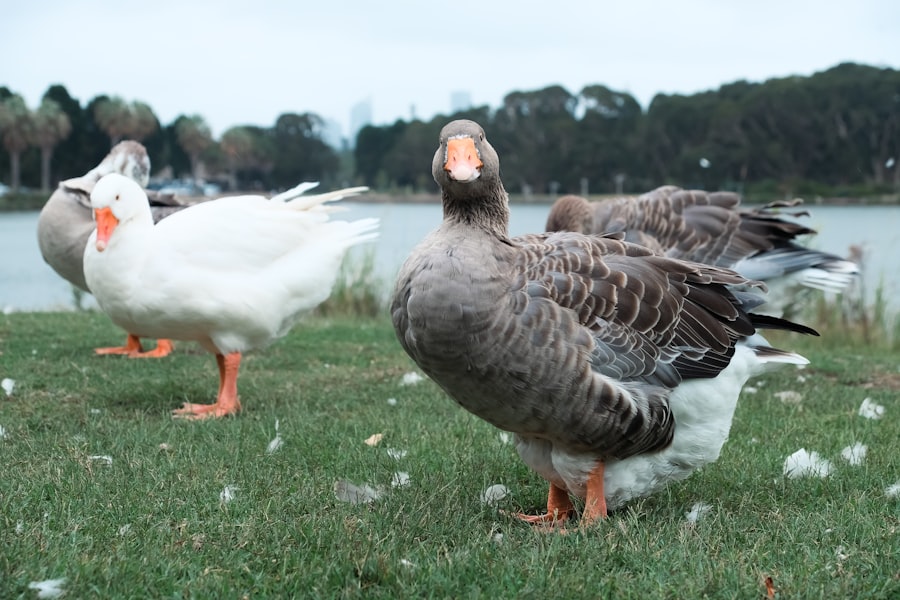
There have been attempts to train white swans to keep geese away from certain areas. This involves conditioning the swans to associate the presence of geese with negative stimuli, such as loud noises or water sprays. The idea is that the swans will learn to associate the geese with these negative experiences and will be less likely to tolerate their presence.
While this method has shown some success in certain cases, it is not always reliable. White swans are intelligent birds, but their behavior can be unpredictable. They may not always respond to the conditioning as expected, and there is no guarantee that they will continue to deter geese in the long term.
The effectiveness of using white swans as a natural deterrent for geese
Using white swans as a natural deterrent for geese can be effective in managing geese populations in urban areas. The aggressive behavior of white swans towards geese can create a deterrent effect, making geese less likely to settle in an area where swans are present.
There have been successful examples of using white swans to manage geese populations in urban areas. For instance, in some parks and golf courses, the introduction of white swans has led to a decrease in the number of geese nesting in those areas. This has helped reduce conflicts between geese and humans and maintain a healthier ecosystem.
The potential drawbacks of relying solely on white swans for goose control
While using white swans as a natural deterrent for geese can be effective, there are potential drawbacks to relying solely on this method for goose control. One drawback is that it may not be a sustainable solution in the long term. White swans are territorial birds and require large bodies of water for nesting and feeding. If the population of white swans exceeds the available resources, it can lead to competition and conflicts among the swans themselves.
Another drawback is the potential impact on other species in the ecosystem. As mentioned earlier, geese play an important role in maintaining ecological balance in wetlands. A decrease in the goose population can disrupt this balance and have unintended consequences for other species that rely on wetlands for food and habitat.
Other methods for managing geese populations in urban areas
There are other methods for managing geese populations in urban areas that can be used in conjunction with the presence of white swans. One method is habitat modification, which involves altering the environment to make it less attractive to geese. This can include removing or modifying nesting sites, reducing food sources, and implementing deterrents such as noise makers or visual deterrents.
Another method is egg addling, which involves removing and treating goose eggs to prevent them from hatching. This can help control the population of geese without causing harm to the birds themselves.
Conclusion and recommendations for managing white swans and geese in urban environments
In conclusion, white swans and geese are two common bird species that are often seen in urban areas. While white swans may have a natural ability to keep geese away, relying solely on them for goose control may not be a sustainable solution in the long term. It is important to consider the potential impact on other species and maintain ecological balance in wetlands.
A combination of methods, including the presence of white swans, habitat modification, and egg addling, can be used to effectively manage geese populations in urban areas. This approach takes into account the behavior of white swans and geese towards each other, as well as the needs of other species in the ecosystem. By implementing a comprehensive management plan, we can ensure a healthy and balanced environment for both white swans and geese in urban environments.
If you’re interested in keeping geese away from your garden, you may also want to check out this informative article on Poultry Wizard’s website: “Does a White Swan Keep Geese Away?” This article explores the effectiveness of using a white swan as a natural deterrent for geese. To learn more about creating a safe and comfortable environment for your poultry, you can also visit their other articles such as “Garden Chicken Coop” and “Chicken Coop Interior Ideas.” Additionally, if you’re considering raising turkeys, Poultry Wizard offers valuable insights on whether turkeys need a coop.
Meet Walter, the feathered-friend fanatic of Florida! Nestled in the sunshine state, Walter struts through life with his feathered companions, clucking his way to happiness. With a coop that’s fancier than a five-star hotel, he’s the Don Juan of the chicken world. When he’s not teaching his hens to do the cha-cha, you’ll find him in a heated debate with his prized rooster, Sir Clucks-a-Lot. Walter’s poultry passion is no yolk; he’s the sunny-side-up guy you never knew you needed in your flock of friends!

